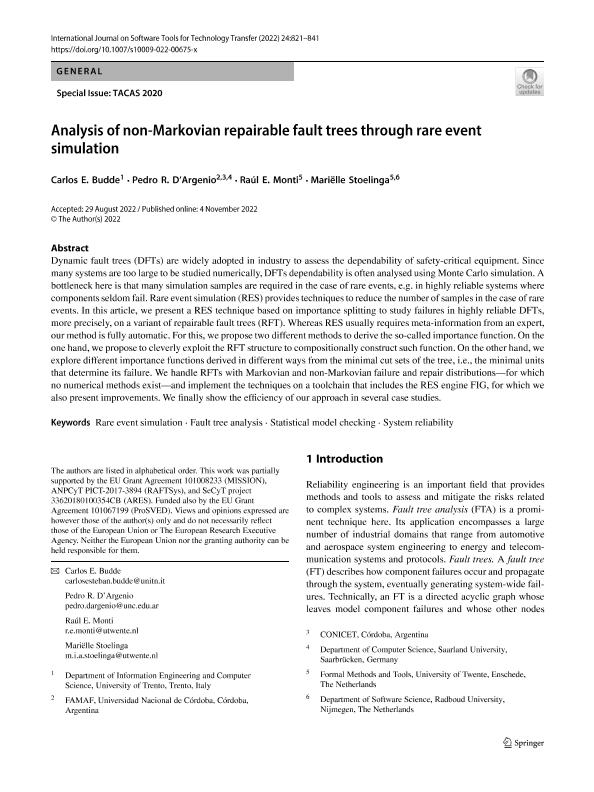Artículo
Analysis of non-Markovian repairable fault trees through rare event simulation
Fecha de publicación:
10/2022
Editorial:
Springer Science and Business Media Deutschland GmbH
Revista:
International Journal on Software Tools for Technology Transfer
ISSN:
1433-2779
e-ISSN:
1433-2787
Idioma:
Inglés
Tipo de recurso:
Artículo publicado
Clasificación temática:
Resumen
Dynamic fault trees (DFTs) are widely adopted in industry to assess the dependability of safety-critical equipment. Since many systems are too large to be studied numerically, DFTs dependability is often analysed using Monte Carlo simulation. A bottleneck here is that many simulation samples are required in the case of rare events, e.g. in highly reliable systems where components seldom fail. Rare event simulation (RES) provides techniques to reduce the number of samples in the case of rare events. In this article, we present a RES technique based on importance splitting to study failures in highly reliable DFTs, more precisely, on a variant of repairable fault trees (RFT). Whereas RES usually requires meta-information from an expert, our method is fully automatic. For this, we propose two different methods to derive the so-called importance function. On the one hand, we propose to cleverly exploit the RFT structure to compositionally construct such function. On the other hand, we explore different importance functions derived in different ways from the minimal cut sets of the tree, i.e., the minimal units that determine its failure. We handle RFTs with Markovian and non-Markovian failure and repair distributions—for which no numerical methods exist—and implement the techniques on a toolchain that includes the RES engine FIG, for which we also present improvements. We finally show the efficiency of our approach in several case studies.
Archivos asociados
Licencia
Identificadores
Colecciones
Articulos(CCT - CORDOBA)
Articulos de CTRO.CIENTIFICO TECNOL.CONICET - CORDOBA
Articulos de CTRO.CIENTIFICO TECNOL.CONICET - CORDOBA
Citación
Budde, Carlos Esteban; D'argenio, Pedro Ruben; Monti, Raúl Enrique; Stoelinga, Mariëlle; Analysis of non-Markovian repairable fault trees through rare event simulation; Springer Science and Business Media Deutschland GmbH; International Journal on Software Tools for Technology Transfer; 24; 5; 10-2022; 821-841
Compartir
Altmétricas




